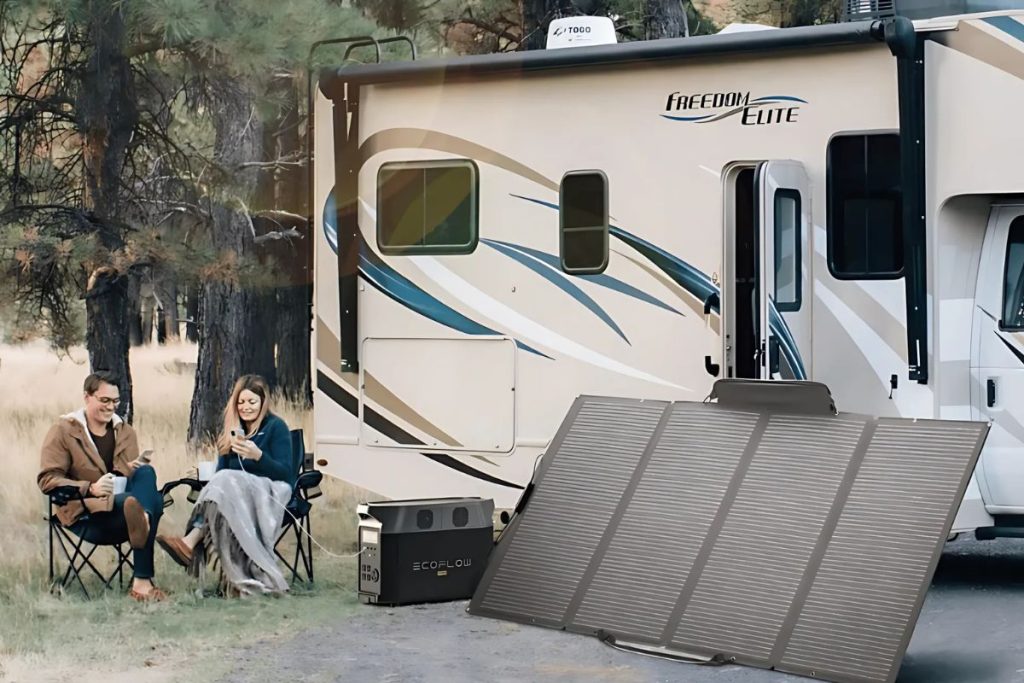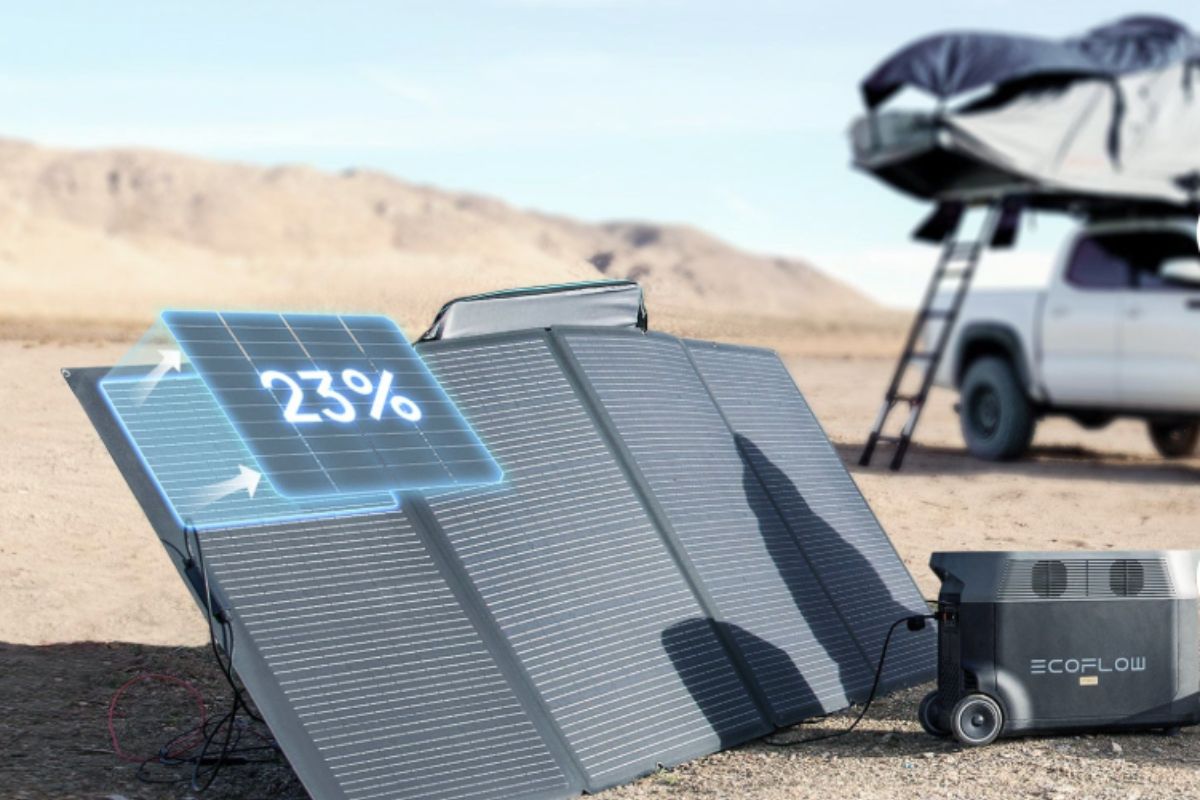

Camping offers a unique way of escaping the daily hustle and bustle and reconnecting with the natural world. Even the most adventurous camper can enjoy modern comforts, like lights, cooking tools, and cell phones. This need poses a very significant question: can one use solar panels to power all of your camping gear? Portable solar panels offer a clean energy option for outdoor adventures. They are an easy and eco-friendly way to keep your gear charged and ready to use. Before your next camping trip, check how solar panels work. Also, see if they meet your power needs.
This article shows you how to determine your camping power needs, select the right solar panel system, and set up your solar-powered campsite.
Table of Contents
Knowing how to calculate your power needs is key for a great solar camping trip. Having selected a solar panel, the next step is to estimate the gear you will take along and estimate its power requirements. You have to list all the devices you require and calculate their daily power needs.
Begin by making a list of the equipment you will be using on your expedition. LED lights, stove, camera, GPS devices, and phone batteries are some examples of minimal camping equipment. Each device has a specific wattage and usage time. These factors help you calculate your total power needs. For example, an LED light may require 5 watts, while a fan is portable and may require 20 watts. Ranking the devices you need ensures that you can power the devices you need without needing to use excess power.
To determine daily energy consumption, you first need to know the wattage and the approximate daily hours of usage of each device. Multiply the wattage by the duration for which you use it in order to determine the watt-hours necessary for each device. Add up all the devices to find the total energy needed every day. Suppose your LED bulb, which has a wattage of 5 watts, is used for 4 hours; it will consume 20 watt-hours. Do the same for other devices in your list and add up the total. This figure gives you a target for your solar panel system, guaranteeing it can meet your daily energy use when camping.
With your power requirements in place, the next step is to choose a suitable portable solar panel system. The system must be able to provide your energy requirements adequately and be portable and convenient to install.
Portable Solar panels for camping are classified into three categories: monocrystalline, polycrystalline, and thin-film. Monocrystalline panels are great for campers. They are efficient and need little space. This makes them perfect for those who want high output without taking up much room. Polycrystalline panels provide an efficiency-cost compromise suitable for individuals with medium power requirements. Thin-film panels, flexible and light, are ideal for minimalists with low power requirements. Choosing between them depends on their features. Consider efficiency, size, and budget based on your camping needs.
When choosing a suitable power station, the key is in the storage and transmission of power generated from solar power. Identify power stations that can output enough power to meet your energy requirements, which are measured in watt-hours (Wh). Make sure the power station has the required outputs (USB, AC, DC) for charging devices. Using your favourite solar panel type with the power station ensures it works well with your setup. Wise selection provides reliable and stable power throughout your camping experience.
To set up a solar-powered campsite, position the panels wisely. Also, manage the power system well. This will make it efficient and reliable.
To get optimum performance, position solar panels where they can receive as much sunlight during the day as possible. This will quite likely be somewhere free from trees or buildings that may cast a shadow in front of the sunlight. When camping in a clearing, place the panels facing south. Adjust the angle based on your latitude. For mobile setups, a tilting installation can adjust the angle to follow the sun. This boosts daily efficiency. Monitor the installation periodically to ensure obstructions do not reduce solar absorption.

Once the panels are mounted, connect them to the power station through proper cables and connectors. Tighten all connections so that there is no loss of energy. All power stations also come equipped with gauges or software to monitor power levels; use these to monitor energy use and charging times. Charge critical devices first, and then charge less essential devices as power permits. Periodically check all connections. Also, clean the panels of dust and debris. This helps maintain performance.
Solar panels can power an entire camping setup if you are properly equipped and choose the right solar panels and the right power stations. Figure out how much power you need. Then, pick the right solar panels and power stations. Set everything up properly, and you can enjoy nature fully while still enjoying modern comforts. Such a green habit not only assists in a green camping experience but also aids your independence and freedom in off-grid situations. As you get ready for your next outdoor adventure, think about adding portable solar panels to your packing list.
Sign up to receive our email, delivering the latest stories straight to your inbox.
